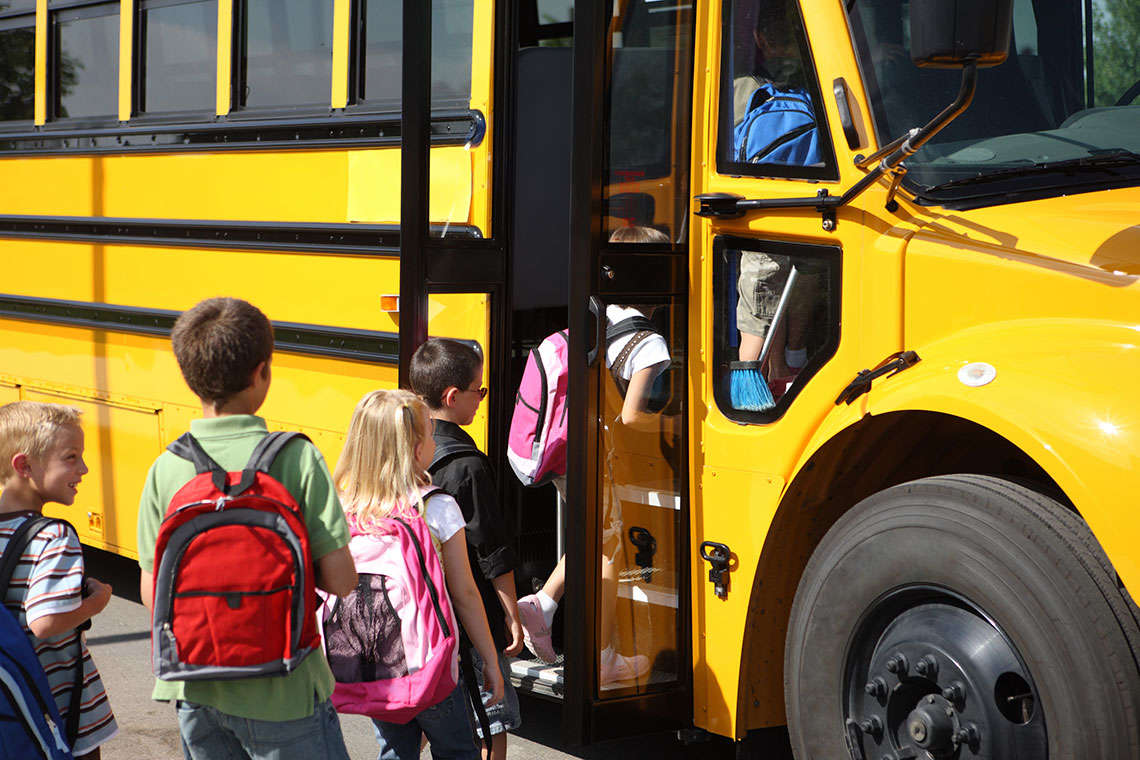
A fatal school bus crash in Baltimore early Tuesday morning brought the national spotlight down on school bus safety once again. Interestingly, many of the stories related to the crash were about how school buses are safe and that crashes involving them occur infrequently. What those articles didn’t highlight, though, was that the real danger surrounding school buses is when children are getting on or off the bus.
The crash in Baltimore involved no children, but nevertheless the driver was killed when the school bus collided with a commuter bus. An aide who was also on the school bus at the time of the crash survived, according to news reports, suggesting that school bus passengers are potentially in a somewhat safe position in the event of an accident.
School buses are specially designed to avoid crashes and prevent injuries, which makes them the safest mode of transportation for children to get to and from school, according to the National Highway Traffic Safety Administration. Still, from 2004 to 2013, 327 school-aged children died in school-transportation related accidents.
However, only a small percentage of the children who died were on a school bus. Just 54 children were killed riding the bus, while 116 were killed as pedestrians after being struck by a bus, a vehicle functioning as a bus, or other vehicles such as passenger cars. This means that it is potentially more dangerous for your child to get on and off the bus than it is for them to actually ride the bus. In light of this, let’s review safety tips that you can go over with your child so they can safely get on and off the bus.
Don’t Horse Around at the Bus Stop
Most children who ride a school bus every day meet at one spot with the rest of the neighborhood children to get picked up. Whenever children get together, there is always a chance they run around and play with each other. But the bus stop is not the place for that, according to the National Safety Council.
The NSC recommends that while children wait at the bus stop they should pay attention and not horse around. They should also take extra care not to go into the street so they are not struck by the school bus as it approaches.
Line Up Correctly When the Bus Arrives
When a school bus approaches the bus stop, make sure your child is at least three giant steps — or six feet — from the curb. The children at the stop should line up away from the bus, and not approach it until the bus driver opens the door and gives them the OK. At that point, they can approach the bus and begin boarding. Make sure they know to use the handrail, because school bus steps can get slippery on a rainy day.
Avoid the ‘Danger Zone’ Getting Off the Bus
While there are dangers getting on the bus in the morning, getting off the bus in the afternoon carries its own risks. Specifically, once children get off the bus there are certain areas they should avoid.
It is imperative that children avoid the “danger zone,” or the 10 feet surrounding the bus on all sides, especially behind the bus. Children in this zone may not be visible to the bus driver, and therefore at risk of being hit by the bus. Children exiting the bus who must cross the street should walk five giant steps — or 10 feet — in front of the bus, then make eye contact with the driver, and not cross the street until the driver acknowledges them, according to NHTSA.
Similarly, if a child drops something in the “danger zone,” they should not retrieve it until they tell the driver. The driver needs to be aware of a child’s location at all times, and if the item goes underneath the bus, the driver should go retrieve it so the child is not in danger.
Watch Out for Other Vehicles
All school buses are equipped with flashing lights on a retractable stop sign that should notify motorists to stop and watch for kids. Drivers usually do stop and wait for the bus to begin moving again, but some are too impatient and will attempt to pass the bus even if children are attempting to cross the street. This is dangerous.
Of all the children struck as pedestrians, 33 percent of them were hit by a vehicle other than a school bus, according to NHTSA. Children should be aware of this so they don’t think the buses stop sign is a replacement for looking both ways before crossing the road.
What If My Child is Injured By A School Bus?
If your child was on the school bus during an accident or was struck by a school bus, it is not their fault, and there is likely someone you can hold responsible for their injury. Our bus accident attorneys will know how to pursue your claim, and may be able to get compensation for you and your child’s suffering. Contact us today for a free, no obligation case evaluation to find out if you have a case.
comments